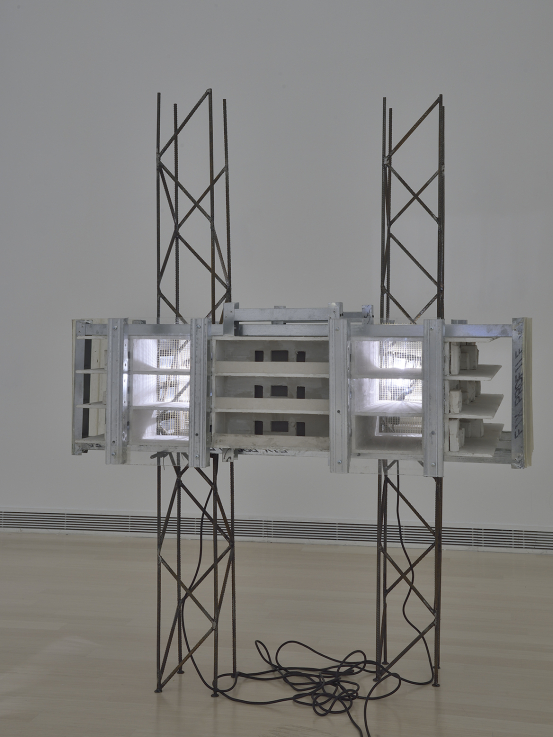KASZÁS mainly creates objects, installations and murals in public spaces. The work is part of a series he made in 2015, in which he created mockups of real or fictitious buildings (for example, an iconic building of his hometown Dunaújvaros, one of the five blocks of flats on Május 1 ut, or a bare and abandoned skyscraper without walls and with small yurts hidden inside and rudimentary ladders for access). Among the mock-ups (or demonstrations) were a mining building (with a shaft lit by a miner’s lamp), but there were also strange hut constructions, housing monstrosities built from the open cabin of a Ferris wheel, and bungalow complexes made from recycled elements. The artist is fond of using ephemeral, very ordinary materials and waste, and his mock-ups and kiosk-huts are often based on the architecture of the Kassakian image. “This work reflects two ideas that, in retrospect from the present, defined modernist architecture. One is Adolf Loos’ essay Ornament and Sin, published in 1910, and the other is the idea of the Dom-Ino house, conceived in 1914 by Le Corbusier, who was greatly influenced by Loos. The Dom-Ino house is a reinforced concrete structure of a prefab, the essence of which is that its spaces can be arranged into rooms according to current needs. The installation consists of modern building materials such as rebar, drywall and prefabricated wall elements. The terraces on the shorter sides of the installation feature a series of plaster reliefs for decorative purposes. These imaginary murals are positives cast from the packaging of various products,” the artist explains the work.
